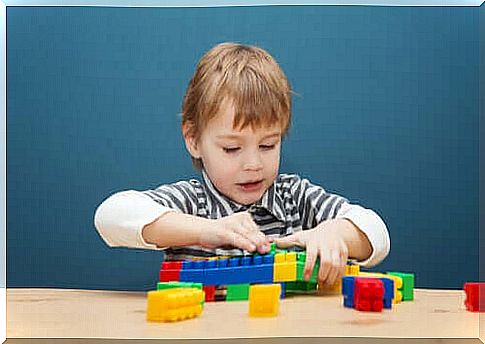Babies Absorb Like Sponges, Is That True?

“Babies absorb like sponges”, how many times have we heard that? This idea is so deeply rooted in the collective social subconscious that we rarely question it. With this statement we take it for granted, for example, that it is worthwhile to transmit as much information as possible as soon as possible.
But is this belief really founded? Is the brain potential of children between 0 and 5 really as incredible as they say? Education professionals answer these questions. One aspect is clear to everyone: a sponge cannot absorb more than its own capacity allows.
A child’s mind is not an empty one. It is not a closet to be filled with an infinite number of objects, books and materials until it explodes. The human brain cannot absorb anything other than the information it receives from its context: it re-elaborates them, rattles them off, interprets them and must give them meaning. Furthermore, learning is an active process, directly linked to emotions.
Our little ones need a solid foundation on which to build their knowledge little by little. It is not useful to fill in: you have to build good foundations, starting from affection and a sense of security.
It is also necessary to stimulate curiosity, play, enthusiasm and joy in them through interaction with everything around them. This is the key to success.

Babies absorb like sponges, a concept to be revised
Parents want their children to be happy. Well, in recent years there is another wish that many would like to have come true: that they are ready for what the future has in store for them.
Such a desire sometimes leads to wanting them to acquire certain skills as soon as possible: reading, writing, being good at math, learning two foreign languages, etc.
Here in this race for the education of brilliant children, we are actually growing up little ones who are super stimulated and with high levels of anxiety.
They made us believe for a long time that children absorb like sponges, therefore, we tend to press the accelerator on the phases of growth without knowing that the brain also has its own times and, above all, its own needs.
A brain with potential, but sensitive to excessive stimulation
Certainly a child’s brain has great potential. After birth and up to 7 months, thousands of neurons will move from within the brain to the frontal lobe. Subsequently, up to 3 years of age this organ will reach its maximum plasticity.
The study conducted by doctor Arthur Toga of the University of Texas and published in Cell helps us to have a global view on the mapping of the brain of a maturing child.
Thanks to magnetic resonance imaging it was possible to discover that up to the age of 10 the consumption of glucose by the infant brain is double that of that of adults. The reason lies in the energy expenditure necessary for the enormous number of neuronal connections that occur during the first ten years of life.
But there is another fact that is worth analyzing. Dr Arnold Scheibel, director of the Brain Research Institute (UCLA), explains that learning should be a time of celebration for the child, joyful and never stressful.
When the levels of stimulation are excessive, the brain actually produces cortisol, the stress hormone. This is counterproductive to child development.

We respect their times, feed their emotions and allow them to play
In a society founded on immediacy and competition, many parents want their children to acquire certain skills as soon as possible. Thus, many children find themselves with denser agendas than those of adults.
The game concept is distorted; games that have nothing to teach seem to make no sense, when the primary purpose of childhood play is to provide fun. The reflection of this dynamic is evident in all those children we label as hyperactive.
Our son is not always the brightest and, even less, the happiest. Sure children’s brains have great potential, but they have their timing, like all developing organs.
For example, it is impossible to teach a child to write or read who has not developed the visual structures that allow him to focus, distinguish and interpret symbols; and it is not possible if he has not yet developed hand-eye coordination.
There is no point in anticipating the stages
In Finland between the ages of 0 and 6 there is no room for the acquisition of reading and writing skills. At school we work on other skills, those that a child will need to build a solid brain foundation from which, later, he can learn the rest. But what are these other skills?
- The game.
- Movement, gross motor and fine motor skills.
- Social interaction.
- The development and refinement of the senses.
- Emotional intelligence.

Concluding Reflections: Do Babies Absorb Like Sponges?
Although the first ten years of life are essential for the correct development of the person, one must never fall into hyperstimulation.
We cannot neglect the importance of the symbolic game, that is, to stimulate creativity, to best nourish emotional intelligence ; nor can we forget to promote movement, interaction, curiosity or pleasure in discovery.
We should therefore review the idea that children are like “sponges”. Our little ones deserve the best opportunities to learn, just as they deserve all our love and the chance to lead the best childhood possible. Without pressure, without idealizations.








